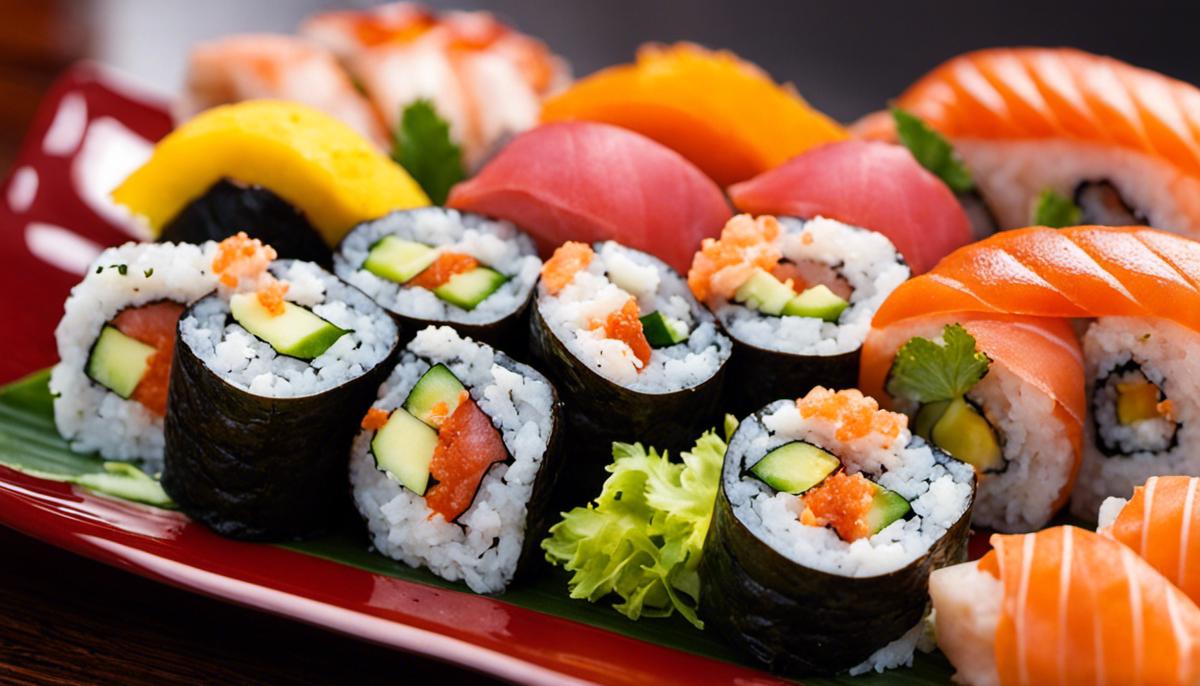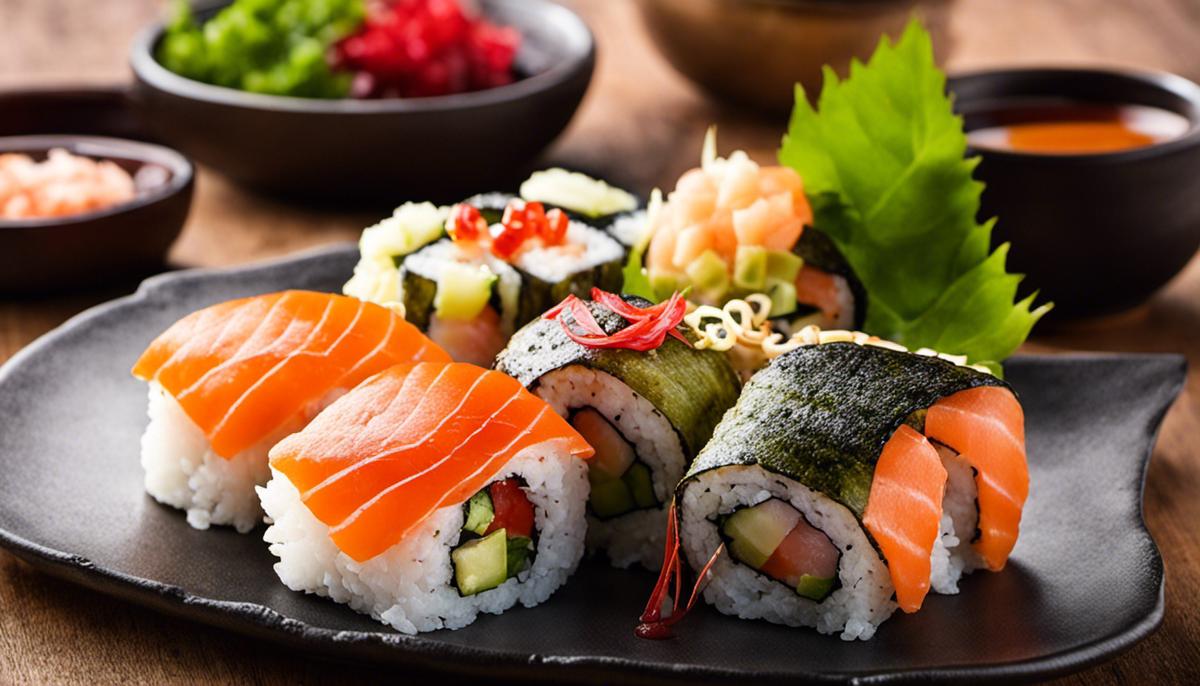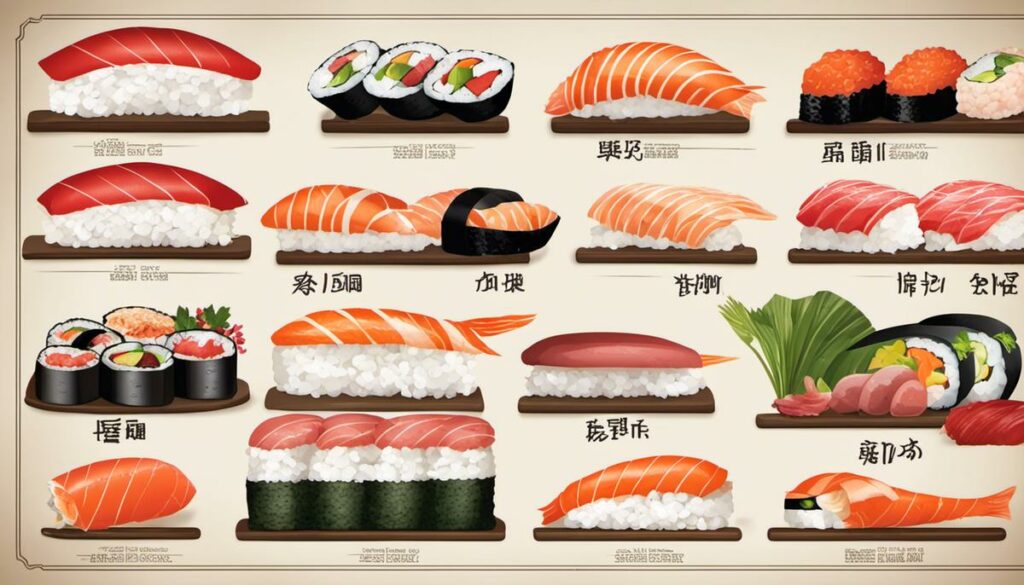Japan is known worldwide for its exquisite cuisine, among which sushi stands out as a true piece of culinary art. It represents the fine blend of tradition and innovation that can be found in every multifaceted culture. However, sushi, popular for its versatility, is more than just a piece of fish on rice. There are a variety of types of sushi, each with its own unique characteristics and flavors. In the upcoming discussion, we will go on a journey together to get to know the different types of sushi and their characteristics. From maki to nigiri, from sashimi to more, every aspect is carefully explored. Immerse yourself in a fascinating story of taste, texture and aesthetic presentation, join us as you explore the art, knowledge and creativity behind this beloved dish.
Different types of sushi and their characteristics
Sushi – it is not only a delicacy, but also an art form.
Much more than just raw fish on rice, every variation of sushi amazes with unique flavors and textures. But what are the different types of sushi we know today? Let’s dive deeper and explore this exquisite culinary diversity.
Nigiri, the undisputed classic, is something for purists. This is all about quality and perfection, the fish is the focus. It is a simple combination of carefully hand-formed rice covered with a slice of raw or fried fish. The simplicity of nigiri puts the freshness and quality of fish and rice front and center, making it a favorite for sushi lovers worldwide.
Maki, also known as sushi rolls, are probably the most well-known and most depicted types of sushi. Here we have a roll of seaweed leaves (nori), rice and filling, which can vary depending on the variety. The range of uses is endless – from seafood or vegetables to avocado or pickled radishes. The trick is to combine a variety of flavors and textures in a single roll.
Another common type is the temaki, or hand rolling. This conical beauty blends rice, nori, and other ingredients into a handy, snackable format. The trick is to wrap everything up so that each element can be enjoyed before moving on to the next.
And of course, we can’t forget sashimi. Sashimi can be considered the most minimalist form of sushi – it consists merely of thinly sliced pieces of raw fish or seafood, without rice. The focus is entirely on the quality of the fish and the skill of the sushi master.
Each type of sushi has its own character and appeal. Whether you’re a fan of nigiri, maki, temaki, or sashimi, sushi offers a plethora of delights for every palate. It is this diversity that makes sushi so fascinating and irresistible. So the next time you enjoy your favorite sushi roll, take a moment to appreciate the subtle nuances and masterful artistry that goes into it. It’s more than just food – it’s a statement that shows us how uniqueness and diversity can enrich lives.

The Art of Sushi Preparation
Sushi has achieved impressive popularity around the world in recent years. This is not only due to its exquisite blend of flavors and textures, but also to the refined and attractive way in which it is prepared and presented. The key components to making sushi are just as important as the skills and techniques of the sushi master.
First of all, it is imperative to mention the most important ingredient of sushi – shari, or the special sushi rice. The preparation of this rice is an art in itself. Particular attention must be paid to the cooking process, washing and soaking in order to achieve a perfect consistency and aroma. After the rice is prepared, it is seasoned with a mixture of rice vinegar, sugar, and salt to create the distinctive spicy flavor.
The second element is the fish. When choosing fish, it is important to use the freshest and highest quality varieties, and only the best fish should be served raw. Whether it’s tuna, salmon, yellowtail, or eel, each fish brings its unique flavors and textures to the sushi experience.
Other important ingredients are the vegetables and other side dishes that complement the sushi. Cucumber, avocado, radish (daikon) and green onions are just a few of the many options appreciated for their crunchy texture and refreshing taste.
Finally, soy sauce and wasabi are indispensable companions for any sushi platter. They round out the flavor and offer a blend of sweetness, spiciness, and umami that elevates the sushi to a higher level.
Almost as important as the ingredients themselves, however, are the techniques and skills of the sushi master. The ability to roll the rice evenly and not too tightly, the correct cut of the fish, and the precise arrangement of the ingredients are crucial for an authentic sushi experience.
The key to perfect sushi preparation lies in the combination of first-class ingredients and craftsmanship. This is the only way to create a dish that not only pleases the palate, but is also a real feast for the eyes. The magic of sushi is to present the simplicity and character of each component in a brilliant and tasteful way. This is what sushi stands for – a culinary work of art that perfectly embodies the harmony of taste, texture and aesthetics.

Sushi Pairings and Flavor Profiles
Sophisticated pairings can underline the culinary delight of sushi and raise the sensory properties of the Japanese delicacy to a new level. It is not only the perfect interplay of ingredients in the sushi creation that counts, but also suitable accompanying drinks and side dishes, which form an essential part of the overall taste experience.
In this sense, sake plays a central role as a sushi pairing. Not only because of its origin, but also because of its effect on the sushi dish. The rice wine brings out the aroma of the fish and balances salty notes harmoniously. Whether Junmai, Ginjo or Daiginjo – each sake has its own individual character, which can come into its own harmoniously depending on the type of sushi.
Tea also offers a variety of pairing options. Especially the green tea, such as the Sencha or Matcha, can underline the sweetness of the sushi rice with its slightly tart note. A fine gyokuro , on the other hand, can bring out a delicate nigiri and intensify its flavor.
Wine lovers will be pleased with a glass of Chardonnay or Pinot Noir , which go particularly well with sushi with fatty fish. Both wines bring out the flavors and offer a pleasant contrast to the salty soy sauce.
The Japanese whisky, with its often fresh and floral notes, is ideal as an accompaniment to tempura maki rolls and creates a full-bodied taste experience that will be remembered.
The right side dishes are just as elementary. In addition to soy sauce and wasabi, which add depth to the sushi, the pickled ginger is an absolute must-have. It cleanses the palate between each bite, allowing you to enjoy each piece of sushi with its full spectrum of flavors.
Another trend in restaurants is umami-rich sauces and toppings, which make the flavor profiles of sushi rolls even more nuanced and interesting. Whether truffle oil, foie gras or teriyaki sauce – there are no limits to creativity and unforgettable taste experiences are created.
Ultimately, even small changes and the right pairing can turn a good sushi into an unforgettable taste experience. The key to perfection is in the details. This is how the whole magic of this culinary art form unfolds.

Now that we’ve embarked on a culinary journey through the fascinating world of sushi, we hope you’ve gained a deeper understanding of its variety, preparation, and flavor profiles. From deciphering the complexities of each type of sushi to approaching the subtle art of sushi pairings, we hope this consideration has helped broaden and deepen your appreciation for sushi. Let’s continue this journey of discovery, exploring new flavors, preserving traditions and celebrating creative innovations in sushi cuisine. There is still a lot to learn and discover in the exciting and diverse world of sushi!


